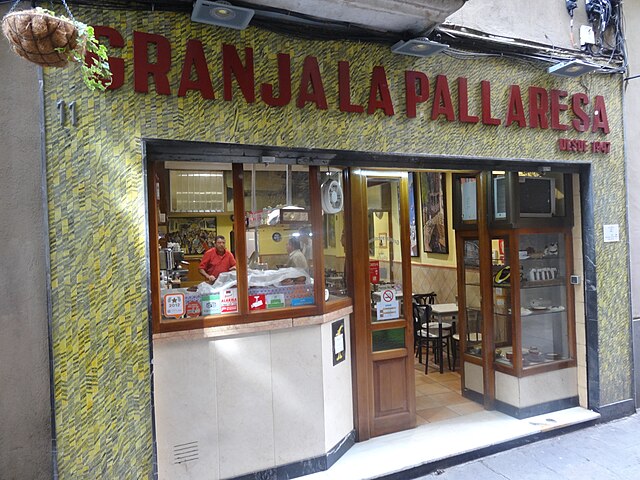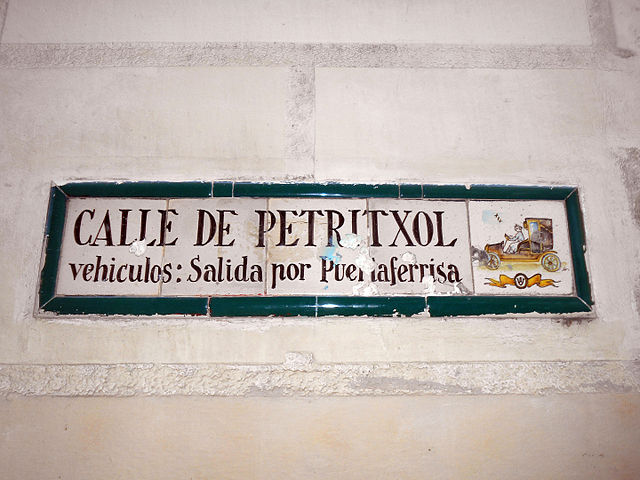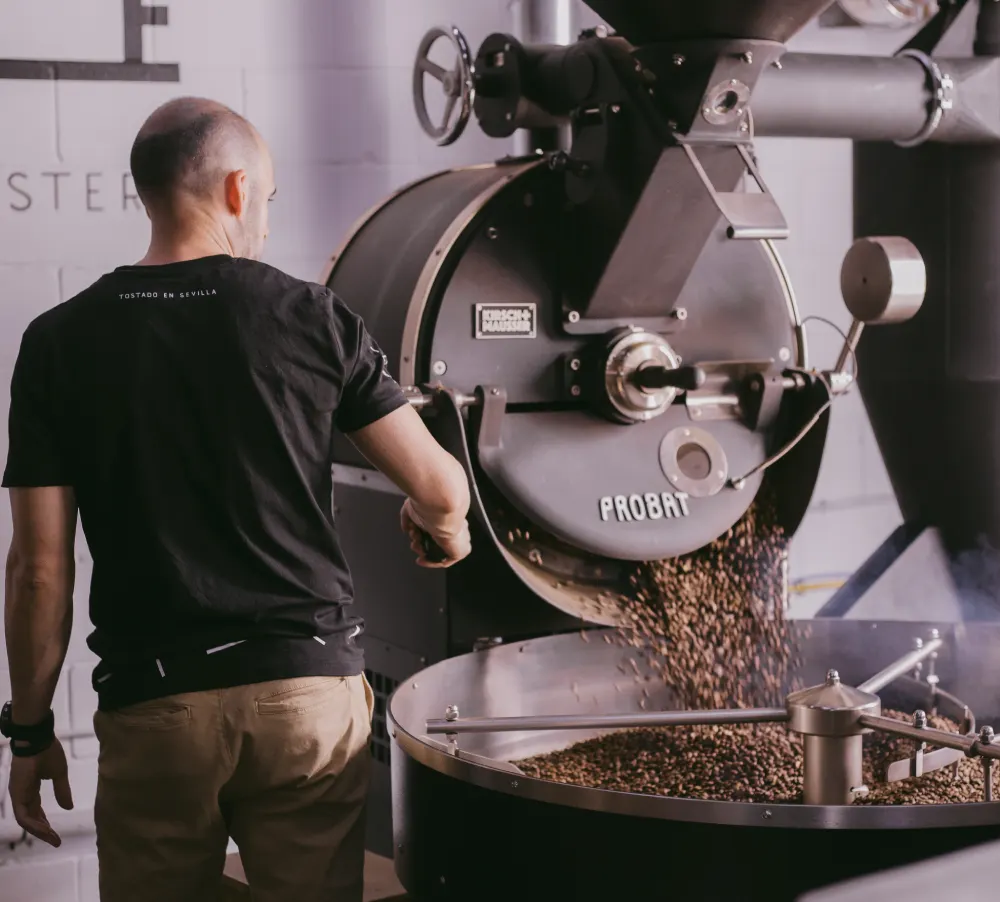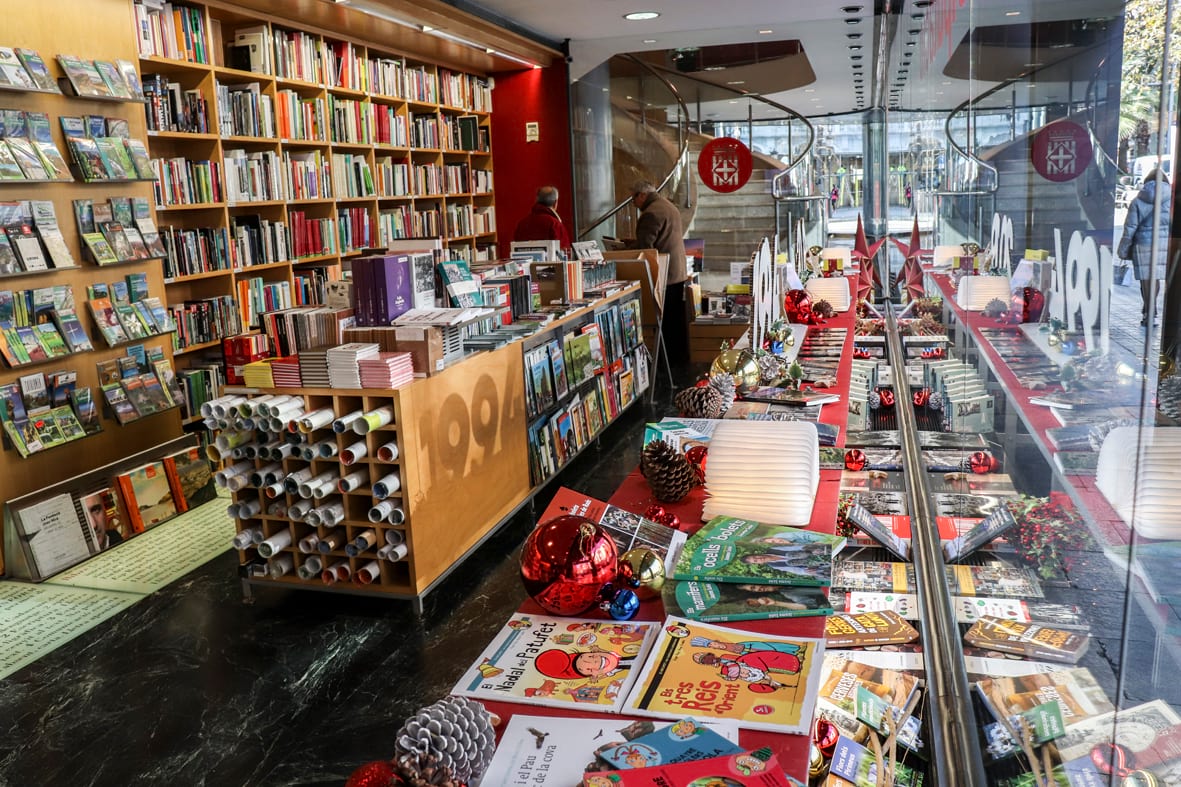A corner with history
In the heart of Barcelona’s Gothic Quarter, you will find Carrer de Petritxol, a narrow alley full of history, charm and an unmistakable aroma of hot chocolate. This street is known by all Barcelonians, not for the monuments, but for the delicious delicacies that can be found in its traditional farms. This street was one of the first to become pedestrianized in Barcelona, a logical step considering its narrowness of just 3 meters wide.
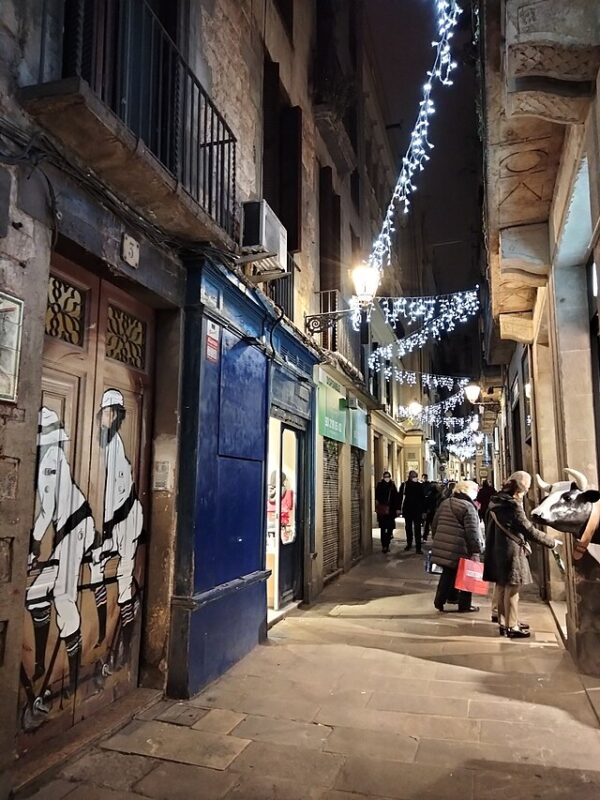
The mystery behind its name
For years, the name Petritxol has generated speculation. Some say it comes from the surname of a family that lived in the area. Others suggest a connection with the Catalan term “poyal”, referring to the stones that slowed the passage of the floats. Although its exact origin remains a mystery, what cannot be disputed is the sweet tradition found on every corner of this charming street.
The iconic farmhouses: Pallaresa and Dulcinea
Pallaresa, a unique experience
At number 11 is Granja La Pallaresa, famous for its hot chocolate and traditional desserts. This farm, once a dairy, now serves traditional delicacies such as crema catalana, and “suizo”, a hot chocolate topped with cream. But what really sets Pallaresa apart is its “menjar blanc”, a medieval dessert made of almonds, cinnamon and lemon.
Dulcinea, a corner with history
On the other side, at number 2, Granja Dulcinea invites passersby with its warmth and aroma of freshly made churros. Once there, you can also enjoy the same hot chocolate that enchanted iconic characters such as Salvador Dalí. Dulcinea is not only a meeting point for sweet lovers, but also a place where history is breathed, a place where art and culture have intersected with the pleasure of chocolate.
Beyond chocolate: a cultural tour
Although Carrer de Petritxol is known mainly for its farms, it also has a remarkable cultural offer. For example, at number 5, you will find Sala Parés, the oldest art gallery in Barcelona. Artists such as Pablo Picasso exhibited here, leaving a mark that can still be felt today.
Architectural and cultural wealth
Along the street, one can admire numerous architectural details that reflect centuries of history. Decorative porcelains, store windows and commemorative plaques on the walls are a living testimony to Petritxol’s deep connection to the city’s cultural past. In addition, today, several emerging galleries have chosen this street to showcase their contemporary works.
Petritxol, more than a street, a destination
While its reputation precedes it as the Chocolate Street, Petritxol offers much more. It is a tourist destination that fuses the ancient with the modern, the sweet with the cultural. Walking its few meters long becomes a multi-sensory experience, where art and gastronomy intertwine to offer an unforgettable experience for locals and tourists alike.
So, whoever visits Barcelona and walks along Carrer de Petritxol, will not only taste the best hot chocolate in the city, but will also walk among whispers of Catalan history, living an experience that much more than filling the palate, pleases the soul.


